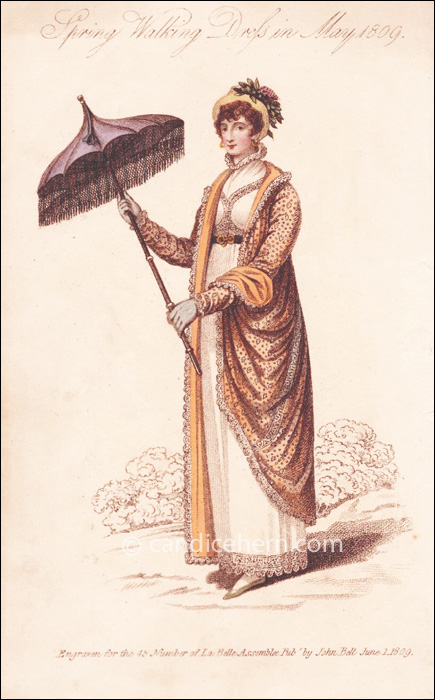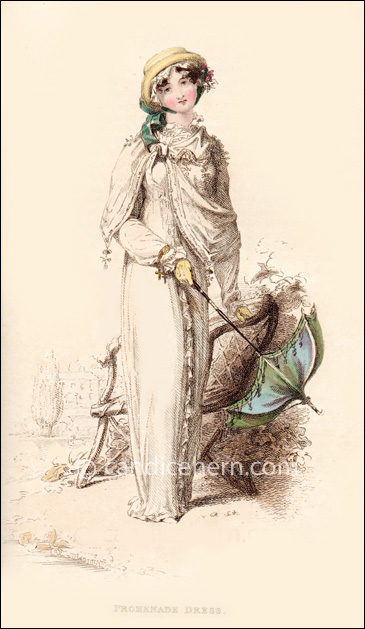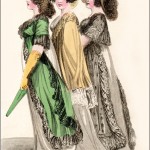La Belle Assemblée, June 1809.
“Spring Walking Dress in May 1809”
The hat is named a Wardel hat. It is usually spelled Wardle, after Gwyllym Lloyd Wardle, MP for Okehampton, who brought forward a motion against the Duke of York in 1809. A scandal had arisen when the Duke’s mistress, Mary Anne Clark, admitted to selling army commissions with the Duke’s knowledge. Wardle exposed the scandal, but failed in convicting the Duke of personal corruption. However, the Duke’s indiscretions were sufficient enough to force his retirement. And so Wardle’s name was in the news for a time. Apparently he was prominent enough for a lady’s hat to be named for him. The style of hat was basically a straw hat with a conical crown.
On the rare occasion, and this is one, the description of a print in a magazine disagrees with the way the ensemble is depicted in the print. As it happens, the fashion editors objected to, among other things, how the Wardle hat was presented in the print.
The print is described in the magazine as follows:
“A round high gown of fine French cambric, made a walking length, and finished at the feet with lace and needlework; Union front, and plaited collar, ornamented with the same. Elastic girdle with buckle or clasp of gold or cut steel. A Turkish coat of clear worked muslin, leno, or patent net, trimmed entirely round with scalloped lace, with appliqued seams of the same; and lined with apricot, pale salmon, or primrose sarsnet; flowing open in front of the figure, in form of the Turkish robe, with a deep lappelled cape. A Wardel hat of fine straw, with conical or beehive crown, ornamented with some delicately contrasted flower. Chinese parasol of lilac sarsnet, with deep Eastern awning. Shoes and gloves of pea green kid. We take occasion to remark that the trimming up of the hat should be more convex, and a little deeper in front, and that it should be worn more to one side, and forward in front. The parasol strikes us as being more correct when chosen of the same colour as the lining of the Coat or the shoes.”








